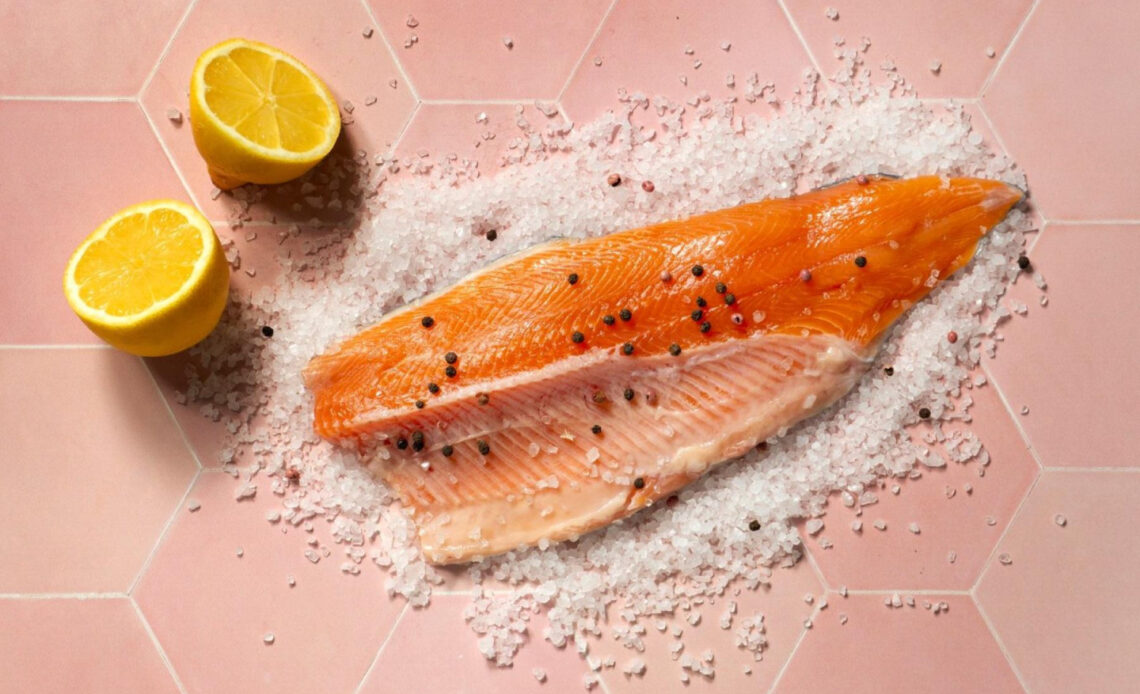
Content:
- What is this
- Harm
- Sources
- How to reduce consumption
- Should we exclude it completely?
What is hidden salt
Unlike pure salt, which we add to food consciously, hidden salt is disguised in the composition of various products.
Hidden salt is salt that is already present in foods, rather than added during cooking or at the table. It enters the body unnoticed, often remaining undetected by taste.
Unlike pure salt, which we add to food consciously, hidden salt is disguised in the composition of various products. We may not even suspect its presence. Many products that do not seem salty actually contain a considerable amount of salt, which makes monitoring your diet a difficult task.
Manufacturers add salt to foods for a variety of reasons: to improve flavor, extend shelf life, or impart a certain texture. Hidden salt is often found in processed foods: sausages, cheeses, sauces, canned goods, and some sweets.
The Harm of Excessive Salt Consumption
Excessive salt consumption is associated with conditions such as high blood pressure, heart disease, vascular disease, and stomach cancer. Excess sodium causes swelling and impairs the functioning of internal organs.
- Kidney problems are also possible. filtering blood and removing excess fluid and waste from the body. Excess salt makes their work difficult, which in severe cases leads to kidney failure.
- The blood volume increases and, as a result, blood pressure rises. This happens because salt retains water in the body. And constantly high blood pressure provokes cardiovascular diseases, including heart attacks (one of the most common causes of death in the world).
- Salt promotes the leaching of calcium from bones, which leads to their weakening and fragility. Osteoporosis develops, which increases the risk of fractures, especially in older people.
- Excessive salt consumption irritates the gastric mucosa, causing gastritis and peptic ulcers. These problems can manifest themselves in the form of heartburn, nausea and other unpleasant symptoms.
What foods are a source of hidden salt: top 7

Sturgeon caviar (black) contains less salt than salmon caviar (red)
Salt is found in many foods that don't seem salty at first glance. For example, breakfast cereals: many cereals and muesli contain added salt, even though they taste sweet.
Salt content per 100 g of product (data from Rospotrebnadzor):
- bread: about 1 g
- salted butter: 1.5 g
- canned meat and vegetable snacks: 1.5 g
- canned fish: 1.5–2 g
- cheese: 1.5–3.5 g
- cooked sausages and hot dogs: 2–2.5 g
- smoked sausages: 3–3.5 g
- lightly salted fish and caviar: 5–8 g
- salmon caviar: 6 g
- medium salted fish: 9–14 g
Pelmeni, vareniki, cutlets and other ready-made dishes often contain a large amount of salt – thanks to this, their taste improves and their shelf life increases.
Ketchup, mayonnaise and other ready-made sauces can contain the daily requirement of salt in just a couple of spoons. For example, soy sauce contains 6.5 g of salt per 2 tbsp.
How to Reduce Your Intake of Hidden Salt

Try not to salt the dishes during cooking, but add salt to taste when they are ready.
- Prepare meals at home using fresh ingredients. This is the most reliable way to independently regulate the amount of sodium in your diet.
- Try to avoid convenience foods, ready-made sauces and other processed foods.
- Read labels carefully. Before buying a product, study its composition. Pay attention to the sodium (Na) content.
Anastasia Kolpakova comments: “A healthy person is recommended to consume no more than 5 g of salt per day. To keep salt under control, try not to salt dishes during cooking, but add salt to taste when ready, taking into account the daily norm. Avoid products with added salt or the flavor enhancer sodium glutamate, such as sausages, hot dogs, canned goods, pickled vegetables and cookies.
You can also, on the contrary, add salt while cooking, but do not put the salt shaker on the table to avoid the temptation to add more salt. Try unsalted seasonings and herbs to improve the taste.
After a couple of months, your taste buds will adapt to less salt. Food will taste just as delicious and appetizing, and it will be healthy.”
Should you completely eliminate salt from your diet?
For some diseases, a salt-free diet or a diet with a significant restriction of salt is recommended. These include kidney diseases – enuresis, acute nephritis and inflammation of the renal glomeruli, obesity, edema, some cardiovascular diseases, as well as hypertension, in which case salt should be completely excluded from the diet.


If you are healthy and decide to experiment with your diet by eliminating salt, make sure you are getting enough sodium-rich foods in your diet.
